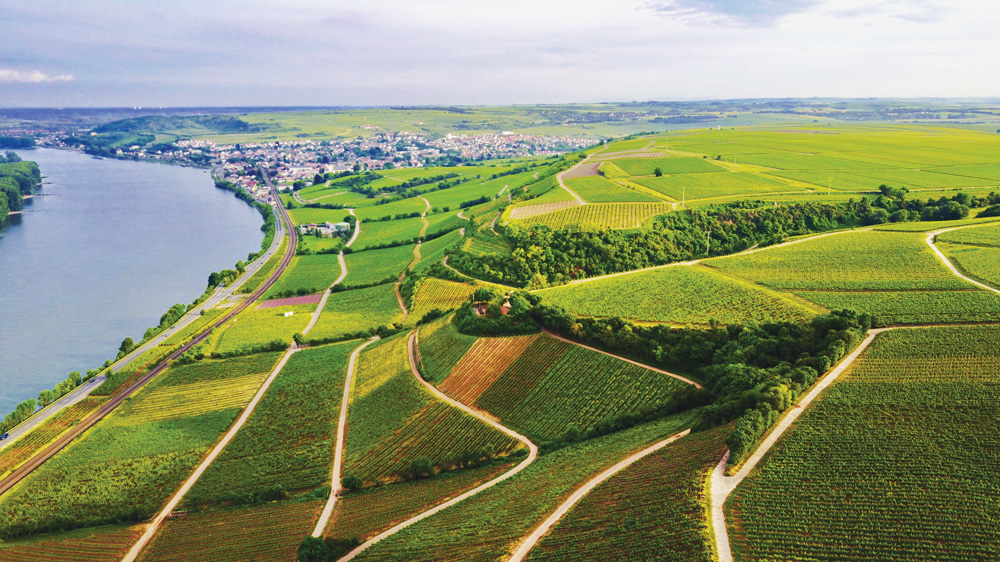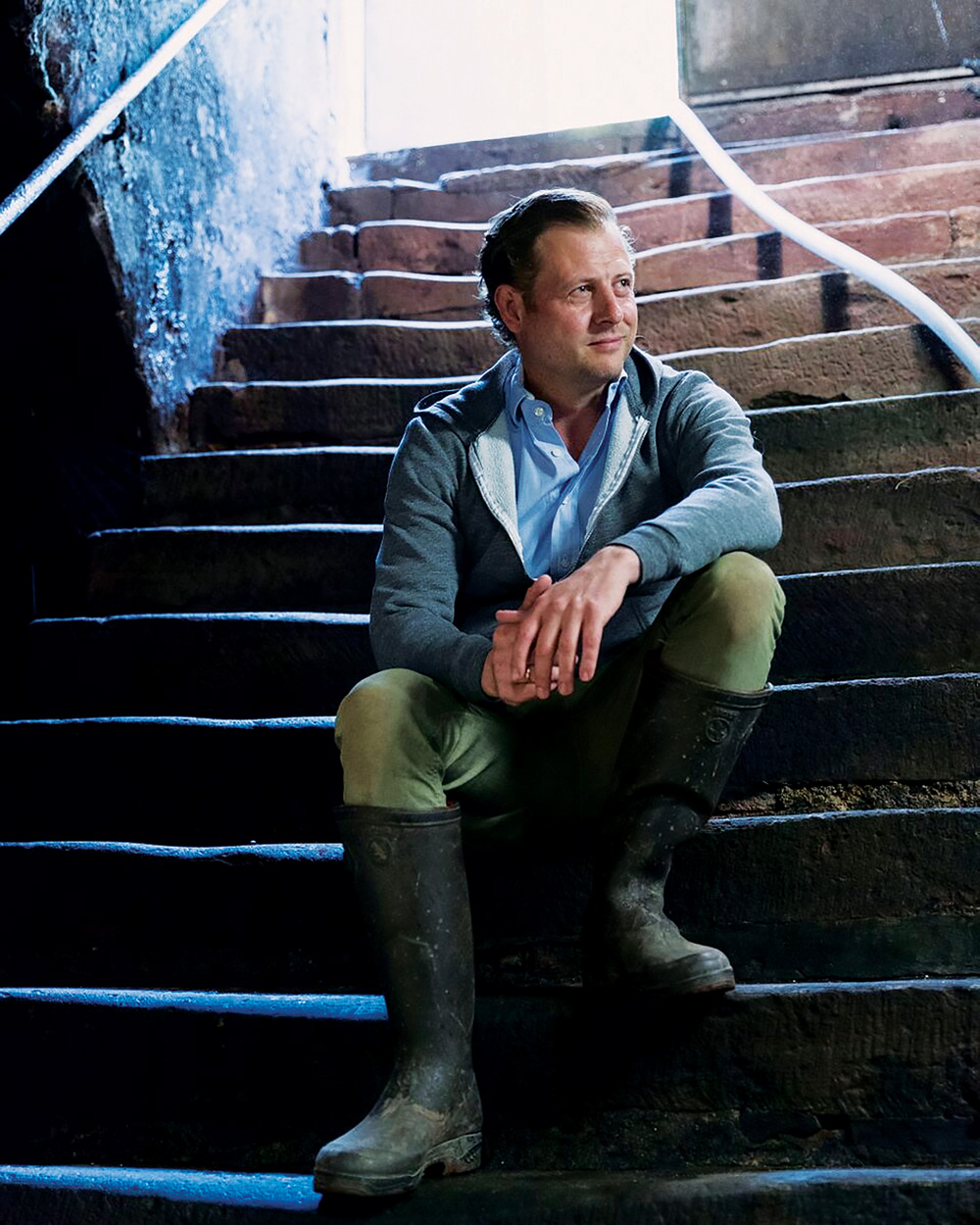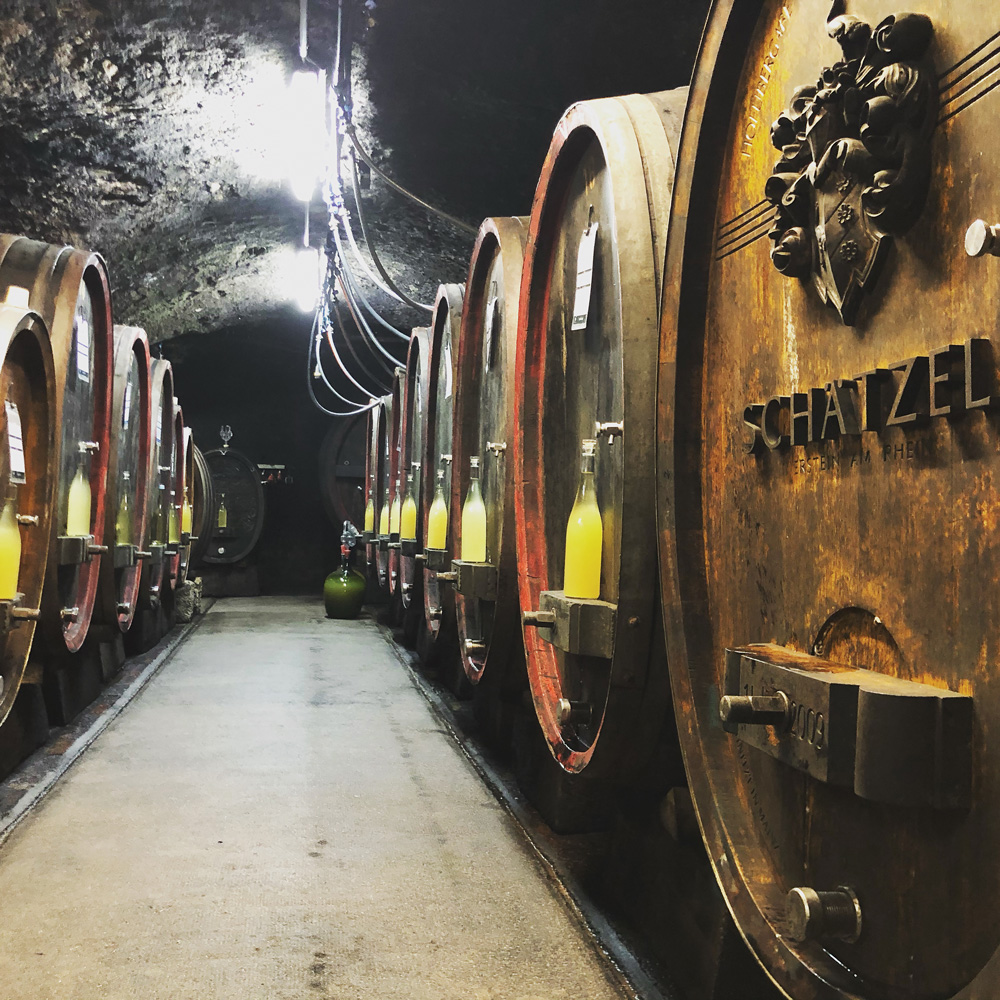Kai Schätzel has transformed Weingut Schätzel in the Rheinhessen into the most talked-about Riesling producer, guided by nature and intuition but taking cues from the world of start-ups.

The years are long in winemaking, and traditions loom longer. Just ask 41-year-old Kai Schätzel, who hails from a 650-year-old winegrowing family in Nierstein, in the Rheinhessen.
Rheinhessen in the Rhine Valley, bordered by the Nahe River on the west and by the Rhine on the north and east, is Germany’s oldest and largest wine growing area, with 70% of its production dominated by white grapes and in previous times, sweet white bulk grape blends known as liebfraumilch.
“The ’80s were quite sad for German wine,” Schätzel acknowledges over our Zoom interview. “As a many-generation vineyard, we have seen good and bad times. The mission is to carry the tradition across the challenging decade and to prepare for the future.”
BORN INTO WINE

I first meet Schätzel in Singapore in January, where he presented a range of electrifying, lower alcohol and higher minerality Rieslings. His eloquent speech and conviction of climate change is partly why I’m chatting with him over Zoom now that he’s in the middle of harvest. We admire the steep slopes of his Hipping vineyard, and he also shows me the 800-year-old cellars where he enjoys being alone with his thoughts. He muses, “The magical point about working with wine and nature is the cycle of the year. Each season has its challenge and pleasure. I need this diversity between vineyards, cellar and airports.”
Schätzel was born into a winegrowing and winemaking family in the Rheinhessen, and was interested in wine for as long as he can remember. The family, along with countless others in the Rheinhessen, were affected by the 1985 Austrian/ German diethylene glycol wine scandal that involved tainted Austrian wines that were bulk bottled in the area. The market for liebfraumilch collapsed, and even higher quality sweet wines such as Auslese were devalued in the after-effect for years after. Schätzel’s father Otto coincidentally went into vocational teaching in wine that same year, while his mother Nanne took over the winery management.
It was while studying economics in Hamburg around 2006 that Schätzel started getting involved in the winery, and by 2008 he and his wife Caroline were fully in charge. The changes were swift and decisive in turning around the winery’s fortunes, as he focused on understanding the terroir and business. “We never stopped to be ‘in’ the change, like a start-up,” he explains. “The strategy was to work on the strongest identity for us and our terroir. You have to feel your history; fully understand your terroir, region and microclimate; develop your own style that translates your surroundings best; find your unique selling point; and just do it.”
For instance, he shows me (via Zoom) how he trains his vines to use leaves as natural foliage, to avoid grapes from over-ripening and trying to take in too much water as a consequence. The shadows cool down the vine system naturally.
Today, the winery is working organically with 16 hectares that comprise vineyards in Hipping, Ölberg and Pettenthal on the ‘red slope’ among others. The special red slate soil parcels are part of the extremely steep slopes that face south to southeast over the Rhine River, imbuing them with favourable long ripening periods. Kabinett is Weingut Schätzel’s calling card, the lightest style of Pradikatswein (quality level), which in the winery’s case, can go as low as 7.5% alcohol while still achieving its flavour and balance. While 80% is planted with Riesling, they also have their own Silvaner clone as well as some Pinot Noir. The overall production is between 60,000 and 100,000 bottles, but it’s not the quantity that Schätzel looks at, it’s the quality, and finally the prices – for instance, from €10 in yesteryears to €200 a bottle today for the top auction label.
TRADITION 2.0
“Tradition is a mood or spirit,” says Schätzel. “You want to keep that spirit but reinvent yourself. Look at the vineyards and how it has changed since my grandparents’ time. It was much cooler, and they had to pick the grapes before full ripening or risk mold. Today, it is the other way around. Yet we are just as traditional as 60 years ago – with deep handwork and free of machines in the steep vineyards, for instance. And after picking and sorting the grapes by hand, we crush them by foot. It may look romantic as though it’s the Middle Ages, but it’s the best way to get the result we want.”
Schätzel and other young winemakers of his generation who are changing the industry are often called ‘Burgundian’ in their approach. Perhaps this is part of the legacy of Otto, whose teachings influenced a new generation of winemakers seeking authenticity and a terroir-driven approach. Tongue-in-cheek, Schätzel points to Mother Nature and Father Rhine as his strongest influences. “There are many influential wine icons, and of course I was listening. For instance, looking to the Mosel/Saar when it comes to Kabinett, Rheingau for biodynamic practices, Rheinhessen for the dry Grosses Gewächs style, Nahe for reduction issues, and yes, Burgundy for understanding salt and minerality.” But most importantly, he listens to his own vineyards and in it, captures the elegance and potential of the Nierstein.
